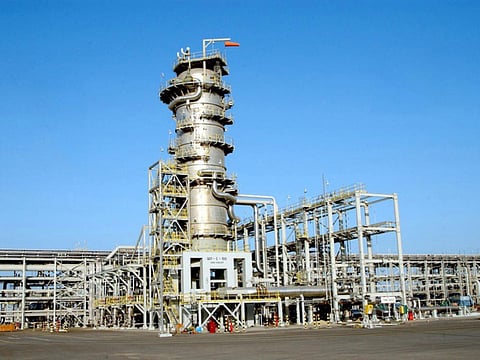IPO of sovereign giant Aramco a confidence-boosting move
Combination of factors including sentimental, economic and financial prompted primary offering of Aramco

Dubai: The first week of 2016 witnessed two contrasting but vital news for oil markets.
Brent crude tumbled to its lowest level in 12 years, and Saudi Arabia, the world’s biggest exporter of oil, announced its intentions to list its crown jewel Aramco.
But asset managers feel this was one of the lever that the country had to resort to in challenging times even as its foreign reserves deplete, and budgets post wider than expected deficits.
“From valuations perspective, it is not the right time to IPO, however from a sentiment and market confidence perspective it may be the right time for Saudi’s to do this. A lot of disappointing economic data coming out of different parts of the world and that is sending negative signals across capital markets, and Saudi is no exception,” Nadi Bargouti, Managing Director of Asset Management at Emirates Investment Bank told Gulf News.
Investors have been battling with expectations of a slowdown in China, along with divergent monetary policies across the globe, regionally in the backdrop of regional challenges and budgetary deficits from a country, which derives all of its revenues from crude oil.
Options
From Saudi’s perspective, there was a huge deficit in the country’s budgets in 2015, and the same is expected in 2016, prompting the government to remove subsidies on oil, utilities among others.
Saudi Arabia has been using all options including using its foreign reserves and issuing bonds to plug the fiscal deficit.
“It’s a combination of factors that has triggered the government the thinking behind doing the IPO of Aramco. It’s sentimental, economical and financial that promoted this. Even in 2016, the government would continue to do tap into the reserves, issue bonds, and sell some of its assets to finance, and this is part of their strategy to share their wealth, diversifying their sources of income and diversifying the economy as well,” Bargouti said.
Meanwhile, in its budgets announced in late December, Saudi Arabia projected a cut in spending amid rising deficits, The government announced plans to cut the deficits to 326 billion riyals (13 per cent of GDP) in 2016 through a combination of spending cuts and augmenting of additional revenue sources other than oil.
Depleting fast
“Saudi Arabia’s foreign reserves are depleting fast and there is no tonic insight and this signifies two major challenges for the country.
Firstly, it is the price of oil, which is making the colossal impact on its economy and given that there is no diversification in place and the 80 per cent of the economy is dependent on its oil revenue.
Secondly, there is a threat that tighter and harsher budgets will be announced. So, considering an option of doing an IPO for its biggest oil firm - Aramco is considered as a more unwavering option,” Naeem Aslam — Chief Market Analyst at Ava Trade said over email.
“We think that it is nothing but a strategical move by the Saudi government and a very clear message to the markets that the oil war is going to get intense and the only thing they care about right now is saving their market share and nothing else,” Aslam added.
Sachin Mohindra, portfolio manager, at InvestAD feels that the government would privatise downstream assets, and may come to upstream over the longer-term.
“In terms of listing Aramco will most likely start with the downstream assets, and I would be very surprised if they list the exploration and production business units in the short to medium term,” Mohindra said.
However, analysts feel looking at the bigger picture the last year’s move to open the markets for foreign investors also come with impediments.
“When they opened the market in the first half of 2015, the valuations were not attractive. Since then the equity risk premium for our markets went up and the valuations of Saudi markets in light of this higher risk premium were not compelling enough for most of 2015,” he said, adding “some operational impediments to greater foreign institutional participation include the minimum AUM criteria of $5 billion to attain a QFI status and the T plus 0 settlement cycle which most foreign institutional investors are unlikely to be comfortable with.”
Sign up for the Daily Briefing
Get the latest news and updates straight to your inbox



